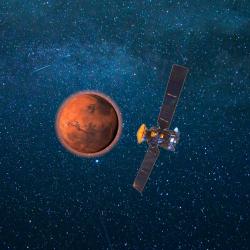Encyclopédie
A combination of instruments to study the atmosphere, plasma environment and surface of Venus in great detail.
The rotational period relative to so called fixed stars and not to the Sun.
Which phenomenon causes the sky on our planet to turn blue? And why at sunset red or orange?
Sunspots look darker because they are cooler and appear according to a periodic variation of about 11 years.
The interval of time separating two passages of the Sun over the meridian, due to Earth’s rotation.
When energetic particles from the Sun disrupt the normal flux of the solar wind and threaten space missions.
One speaks of fast solar wind with speeds of 800km/s and slow slower wind with speeds of around 400km/s.
The solar wind is a plasma, a stream of charged particles (ions and electrons) which are continuously escaping from the Sun into the interplanetary medium.
Insight in the behaviour of the Sun in relation to power failure, satellite break down and astronaut exposure to radiation.
To take a product, process, or material and test it in order to prove that it will withstand the environment of space flight.
The environmental conditions in Earth's magnetosphere, ionosphere and thermosphere due to the Sun and the solar wind.
The presence of ozone in the stratosphere causes temperature in the stratosphere to rise with altitude.
Small droplets, injected in the atmosphere during volcanic eruptions, play an important role in the physico chemistry of the stratosphere.
Sulphur dioxide enters the atmosphere as a result of volcanic eruptions, biomass burning,... It can lead to acid rain.
Nuclear fusion reactions in the Sun transform hydrogen into helium releasing large amounts of energy.
Method in which electrical components are mounted directly onto the surface of a printed circuit board (PCB).

